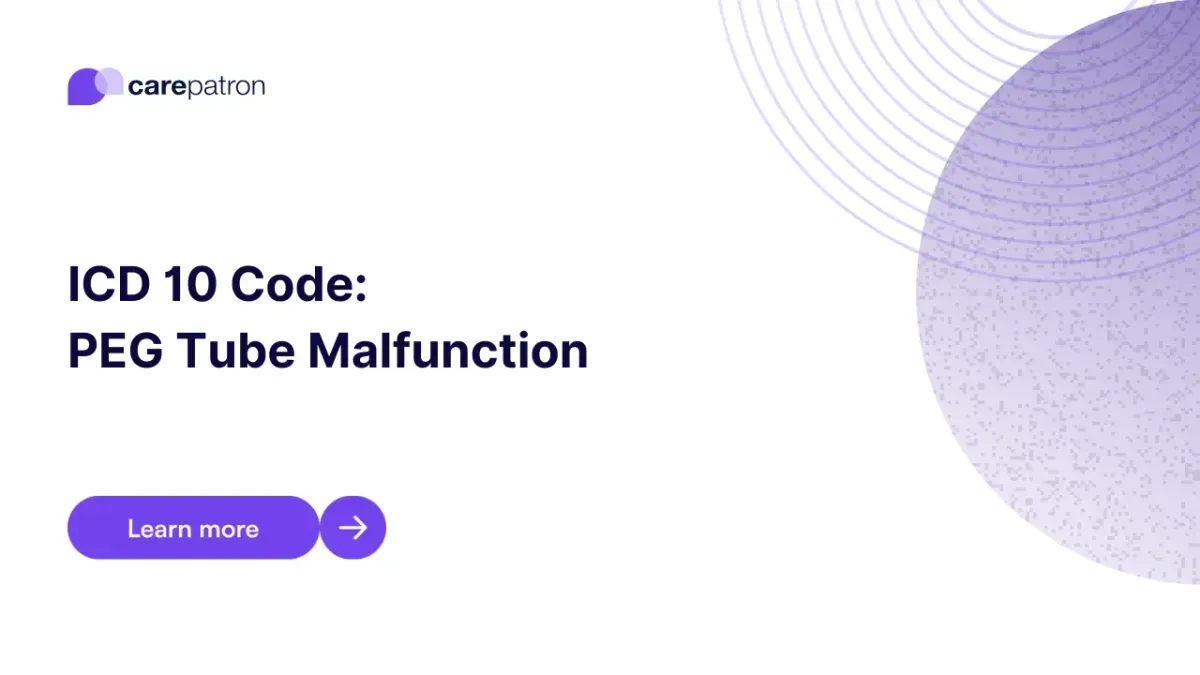
PEG Tube Malfunction ICD-10-CM Codes
Learn which ICD-10 codes apply to PEG tube malfunctions, including dislodgement, infection, or blockage. Find billable codes and clinical documentation tips.
Use Code
Commonly asked questions
PEG tubes are not always permanent; they can be temporary or long-term depending on the patient’s medical condition and nutritional needs. Some patients may have the tube removed once they recover the ability to eat and drink safely by mouth.
A PEG tube typically needs replacement if it becomes clogged, damaged, dislodged, or causes signs of infection or leakage. Healthcare providers also schedule routine tube changes based on the tube type and clinical guidelines.
No, using a PEG tube doesn’t mean someone can never eat by mouth again. Many patients regain the ability to eat orally with time, therapy, and proper medical supervision.
EHR and practice management software
Get started for free
*No credit card required
Free
$0/usd
Unlimited clients
Telehealth
1GB of storage
Client portal text
Automated billing and online payments
